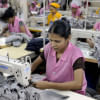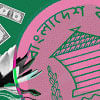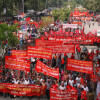9 sectors hold 70pc bad loans

Around 70 per cent of default loans in the banking sector is concentrated in nine sectors of the economy as many borrowers are finding it difficult to pay instalments for the dragging economic slowdown while willful defaulters are also a major factor.
The nine sectors are ship-building and ship-breaking, small and medium enterprises, leather, trade, textile, readymade garment, transport, credit card, and non-bank financial institutions (NBFIs).
Non-performing loans in the sectors stood at Tk 71,030 crore in December out of a total default loan of Tk 101,935 crore, according to the Financial Stability Report released by the Bangladesh Bank on Monday.
The business slowdown stemming from the coronavirus pandemic along with the ongoing economic crisis has hurt the borrowers in the nine sectors. In addition, banks also gave out loans without following corporate governance, pushing up NPLs.
As of December, banks disbursed funds to the tune of Tk 20,236 crore to the ship-building and ship-breaking industry. Of the sum, 18.87 per cent has turned bad.
Banks gave out loans generously to the ship-building and ship-breaking industry in 2005-2006 as local yards won eye-catching export orders, according to Syed Mahbubur Rahman, managing director of Mutual Trust Bank.
Existing companies pumped hundreds of crores of taka into expanding their footprint. New shipbuilders also sprang up. But it received a major blow after the financial crisis of 2007-08 hit hard the developed economies, bringing the industry to its knees and forcing many buyers to cancel orders.
As a result, borrowers in the segment have been unable to repay the loans.
Although the BB has relaxed rules on loan repayment from time to time for the shipbuilding sector, it has not turned around yet.
The export of ships, boats and floating structures was only $0.24 million in the last fiscal year, the lowest in a decade, data from the Export Promotion Bureau showed.
The shipbreaking industry is also not doing well.
Just 45 of the 158 shipbreaking yards in Chattogram are currently operational. Many shipbreaking yards are suffering losses this year as they had to count high costs for the hike in US dollar prices amid the depreciation of the taka.
Emranul Huq, managing director of Dhaka Bank, says willful defaulters have mainly brought woes for the ship-breaking sector, the second-largest in the world after India in 2022.
Meanwhile, the cost of scrap vessels escalated in the global market, creating a major problem for the local yards.
In December, the default loans in the SME sector accounted for 13.14 per cent of the total funds disbursed by banks.
"Businesses in the sector usually face various challenges. The coronavirus pandemic has compounded those challenges," said Rahman.
"So, some banks are slowing down the disbursement of the loans going to the sector."
Of the Tk 255,943 crore extended to the trade and commerce sector as loans, 10.84 per cent have become bad.
Banks extended credit support, also known as commercial loans, to traders to meet the financing requirement for their day-to-day operations and facilitate imports.
Rahman says the price fluctuation in the global market has created a difficult condition for businesses, the key reason for the concentration of default loans in the sector.
Credit card users were responsible for 7.77 per cent of the credit extended by banks going sour. Credit card loans totalled Tk 7,078 crore.
A BB official says that many credit card holders are struggling to survive amid the cost-of-living crisis, driven by higher consumer prices.
Like in most countries, inflation has been rising for months in Bangladesh for a record surge in import bills, piling up pressures on consumers.
"The existing economic stress has seen the living standard deteriorate. And many cardholders are unable to repay loans on time," said the central banker.
Some non-bank financial institutions have also failed to repay loans to banks.
Some 7.39 per cent of the total loans of Tk 7,297 crore given by banks to NBFIs have turned into bad debts.
A good number of NBFIs have faced a wide range of scams in recent years and their loans to borrowers have turned into NPLs. So, their strength to repay depositors, which include banks, has eroded significantly.
Another major reason behind the concentration of default loans in the nine sectors is the tendency among many lenders to breach rules while disbursing credits.
Of the Tk 12,18,850 crore loans in the entire banking sector, the overall ratio of default loans stood at 8.36 per cent in December.

 For all latest news, follow The Daily Star's Google News channel.
For all latest news, follow The Daily Star's Google News channel. 







Comments